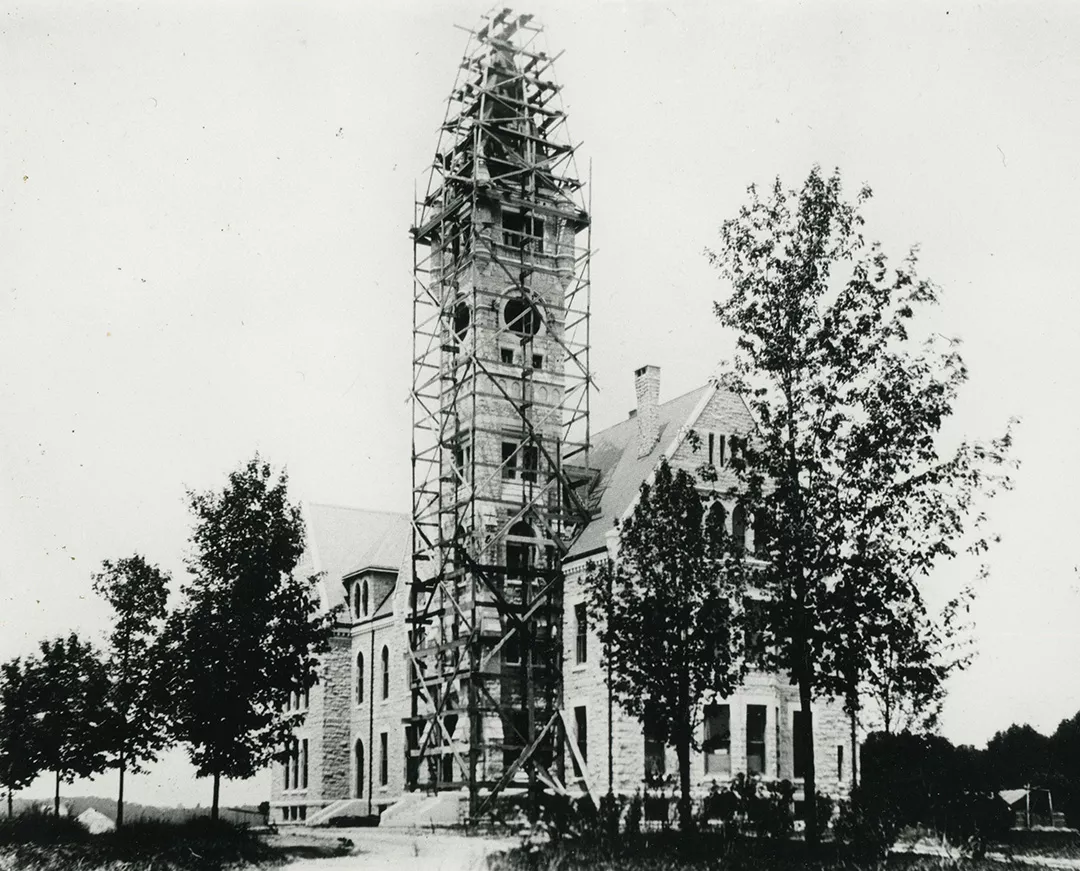If These Walls Could Talk
How Bryn Mawr’s physical landscape sheds light on its earliest history.
A new student-organized exhibition explores the earliest years of the College from its conception in 1872 to its opening in 1885 and through its first decade of operation. Who Built Bryn Mawr? A Rough Draft in Stone, 1872–1894, which runs through December 16, considers the motives and philosophies of the white Quaker men and women who brought the College into being.
As the exhibit makes clear, every aspect of the campus—from the stones of its buildings to the height of its stairs—was vigorously debated and consciously designed. By “reading” the physical evidence of the built environment and examining archival documents, the exhibit curators, guided by Professor of History of Art Alicia Walker, were able to discern the founders’ formative ideologies.
Bryn Mawr’s Quaker founder Joseph Taylor originally sought to establish a “female Haverford” that would provide a “guarded education” for Quaker women and place Christian teachings at the forefront.
Taylor Hall, one of Bryn Mawr’s first buildings, allied itself with American and British academic institutions through its High Victorian Gothic style, modified to conform to Quaker values of simplicity.
After Taylor’s death in 1880, the Trustees embraced a more worldly stance, and by 1884 a new vision came into focus. The College adopted a classical curriculum emphasizing British, Greek, and Roman traditions and reflecting the founders’ shared belief in the cultural superiority of Western European society. In step with this new direction, the interior of Taylor Hall was transformed through the addition of classical plaster casts and photographs of Greco-Roman and European art and architecture. This learning environment reflected ideologies of white, European, and especially Anglo-Saxon superiority and was intended to cultivate female students in this image.
Who Built Bryn Mawr? is an ongoing project that supports research and curatorial opportunities for students interested in changing the way the College understands its history.
Published on: 10/25/2022
